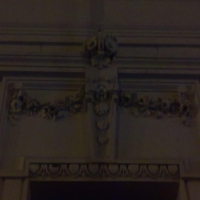![]() Published in Iran - Social interactions and entertainment - 30 Nov 2019 00:50 - 1
Published in Iran - Social interactions and entertainment - 30 Nov 2019 00:50 - 1
 Persepolis, Persepolis, Hezeston, Saddstone, and Forty Names, also known as Persepolis, Persepolis, Hezeston, Fortune, and the fortress of Iran's capital, Takht-e-Jamshid, have a wealth of knowledge, including architectural, artistic, male and female, over the course of six years with the support of the Workers' Insurance. they built.
Persepolis, Persepolis, Hezeston, Saddstone, and Forty Names, also known as Persepolis, Persepolis, Hezeston, Fortune, and the fortress of Iran's capital, Takht-e-Jamshid, have a wealth of knowledge, including architectural, artistic, male and female, over the course of six years with the support of the Workers' Insurance. they built.Persepolis is the name of one of the ancient cities of Iran that for many years has been the magnificent and ceremonial capital of the kingdom of Iran during the Achaemenid Empire. This place has been one of Iran's registered UNESCO World Heritage Sites since 1979.
- In 518 BC, Persepolis was built as the new capital of the Achaemenids in Parseh. Persepolis is located north of Marvdasht city, north of Fars province (northeast of Shiraz).
- The founder of Persepolis Persepolis was Darius the Great, after which his son Khashayarshah and his grandson Ardeshir I were added to expand the complex, and it has been around for 200 years.
Countless architects, artists, craftsmen, workers, women and men were involved in the construction of this magnificent monument, which in addition to receiving salaries received the benefits of labor insurance. It took 120 years to build this large and beautiful collection.
The great inscription of Darius the Great on the wall of the south face of Persepolis clearly indicates that there was no building in this place before. The total size of Persepolis palaces is 125,000 square meters.
- The earliest scientific excavations in Persepolis were made by Ernst Emil Hertzfeldt in 1931. He was sent by the Institute of Oriental Studies at the University of Chicago. His findings are still kept at the institute.
- In the thrones of Sunshine, no one can be seen in humiliation or disgrace, and the representatives of the United Nations are not as defeated or enslaved, but are all equally members of the great global community, and all nations, from the Medes to the Indians, Tunisians, Africans and Greeks, all as independent individuals. And they were self-reliant.
- In flat-stone petroglyphs the distance of each nation is separated by a cedar tree, which is a sacred tree. The ranking of the representatives of the nations is based on their culture and background or their proximity, such as the Medes, Elamites, Khuzis, Babylonians, Assyrians.

Support
ReZaJeRiChOoScorpionPablo CostaWayne GretzkyRadovljeRadovljeRadovljeRadovljeRadovljeRadovljeRadovljeRadovljeRadovljeRadovljeRadovljeRadovljeRadovljeRadovljeRadovljeRadovljeRadovljexxxxshafagi aComments (1)

Albatros ADD 19. Hecho en ARGENTINA. DEFENSA DE ZONA.


